Extreme PSUs Incoming: Enermax, Leadex, and Seasonic at Up to 2800W
by Anton Shilov on June 18, 2024 11:00 AM EST- Posted in
- Cases/Cooling/PSUs
- Seasonic
- Enermax
- Super Flower
- leadex
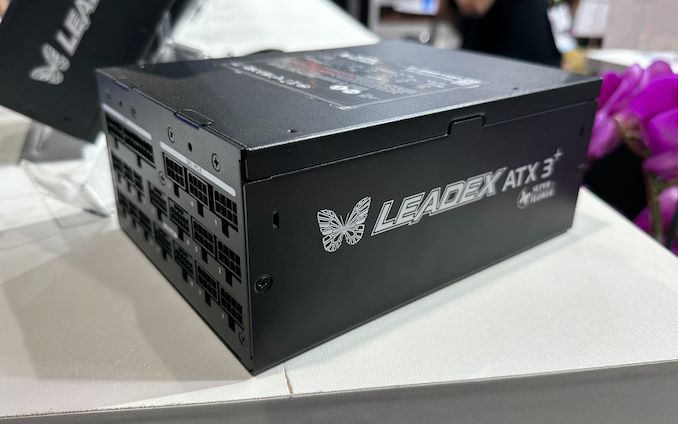
Just several years ago, we were impressed to witness a 2,000W power supply for mining systems at Computex. But with arrival or AMD's Ryzen Threadripper WX and Intel's Xeon W-3400-series – CPUs that can devour all the way to 900W under heavy loads – as well as NVIDIA's GeForce RTX 4090 graphics cards (or, well, H100 PCIe for AI), 2,000W PSUs are no longer entirely overkill. As new processors have raised the bar on power consumption, so has the bar been raised on PSUs themselves. as evidenced by this year's show, with several power supply manufacturers showing off new extreme PSU designs that go as high as 2,800W.
To that end, I will begin the story from the least 'extreme' PSU that I saw at Computex and this is Seasonic's Prime PX-2200 80+ Platinum-badged ATX 3 PSU. The unit handled a custom-built AMD Ryzen Threadripper Pro 7995WX-based PC with 256 GB DDR5-4800 memory and four Gigabyte GeForce RTX 4090 graphics cards without breaking a sweat at the trade show.
It is noteworthy that the Prime PX-2200 has only one 16-pin 12V-2x6 power connector for graphics cards, so Seasonic used adapters to power three out of four RTX 4090 boards.
Moving on to a more powerful PSU, which is Enermax's Platimax 2400W 80+ Platinum-rated ATX 3.1 power supply. This one has two 12V-2×6 auxiliary power connectors for graphics cards, which is more than enough for an extreme gaming system. Enermax did not showcase this one in action at Computex, perhaps, because it is almost half of a year away and yet has to pass all the necessary tests.
The Enermax Platimax 2400W is set to enter mass production this December and will be available for $499, according to the company.
But what is 2,400W, if you can get all 2,800W? Well, Super Flower's Leadex SF-2800F14HP 80+ Platinum-badged ATX 3.1 PSU can deliver 2,800W to a high-performance CPU and four graphics cards over five voltage rails. This power supply is well beyond what even a high-end desktop needs, and seems aimed more at workstation-style AI systems for research or on-prem inference. This one is expected to be available later this year for around $599, according to a representative at the booth.
It goes without saying that these extreme power supplies have a rather limited market. Not only because of the small base of systems that could ever need a PSU that could be measured as a multiple of horsepower (745W), but also because of outright mains compatibility – the standard US 15A/120V outlet can't drive much more than a 1600W PSU. So power supplies like these are only readily usable in Europe, and in locations in the US with non-standard outlets. Then again, if you need a 2,800W PSU, you can probably afford the electrician needed to get one wired up.


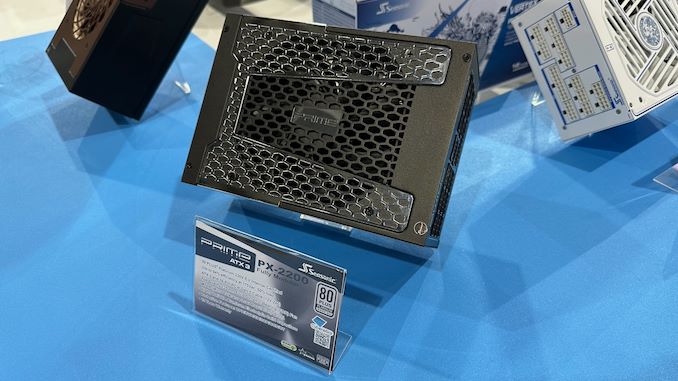
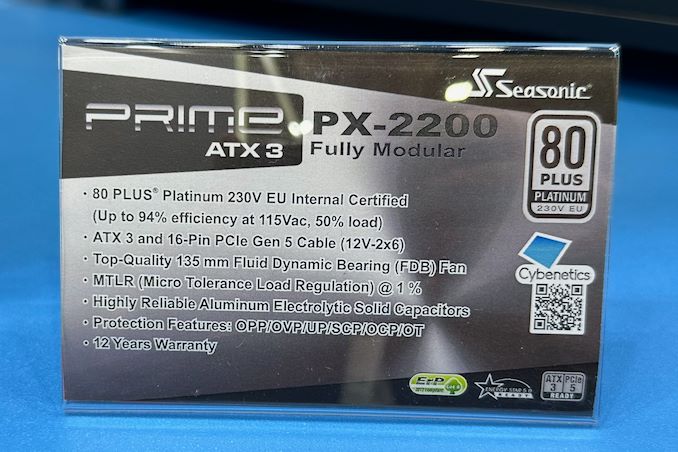





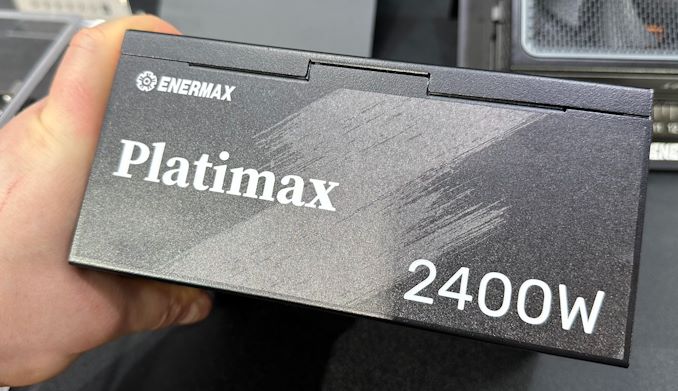
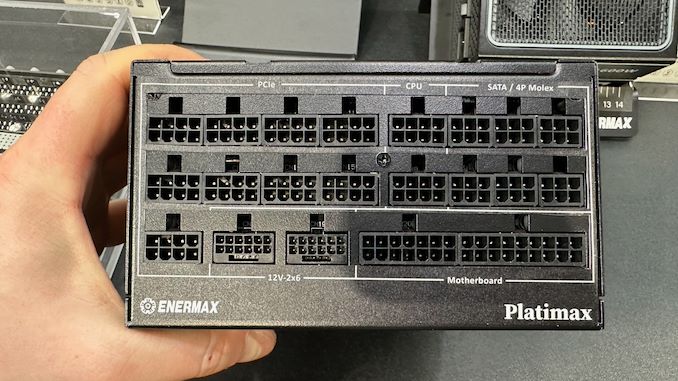




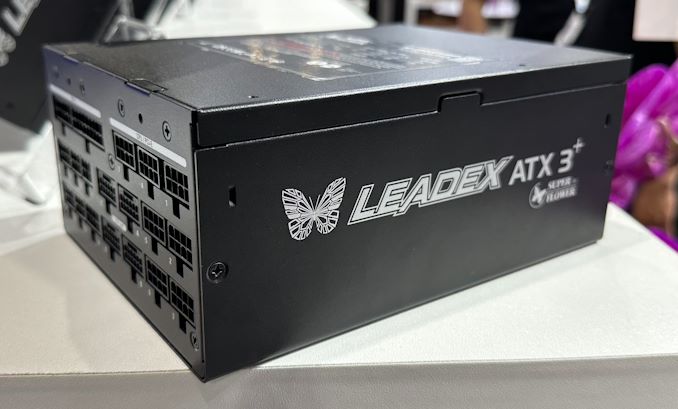
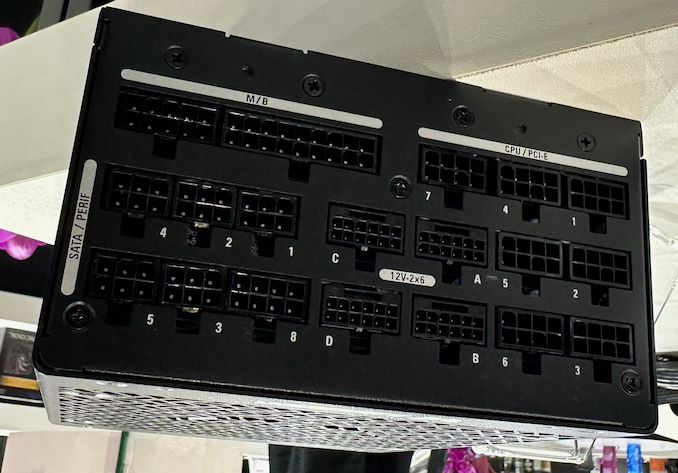












13 Comments
View All Comments
Threska - Tuesday, June 18, 2024 - link
Breaker, outlet, what's not to worry?https://www.quora.com/How-many-watts-can-an-Americ...
ballsystemlord - Tuesday, June 18, 2024 - link
Just in case no one knows, modern US buildings use 20A per breaker.I would know, my father's in the construction industry and can read breaker amperage's just like anyone else.
ballsystemlord - Tuesday, June 18, 2024 - link
EDIT: 20A for the breakers.They also run 14AWG wire.
Dr_Derpface - Thursday, June 20, 2024 - link
Not quite. Residential construction still runs 15A breakers for most circuits, and 20A for places like bathrooms/kitchens that need more current (hair dryers, griddles, microwaves, etc). High-power draws like ranges, HVAC, and dryers get dedicated 240v circuits at either 30 or 60A.They're using 14AWG for the 15A circuits, but for the 20A runs they're using 12AWG. NEC prohibits using undersized wire, and doing so would be nearly suicidal anyway.
Commercial construction tends to standardize on 20A, but even new houses I've seen in the last couple years have been majority 15A.
But while in theory a 20A circuit could handle a 2400W power supply, most installations aren't meant for 100% continuous load (defined as 3 hours or more). Yes, the breaker is rated for 100%, but that's at 40C ambient in open air. Once it's packed into a packed into a panel with 20-30 (or more) other breakers and the door is shut, things could hit 40C quite easily. So basically the rule of thumb is to not to exceed about 80% continuous load on any given circuit.
I think they're SLOWLY starting to move to 20A as standard, but since heavier wire costs more money, a contractor's gonna save wherever he can unless the client specifically asks for it (12AWG is roughly 30% more per foot, last I checked, so a good $500 difference on a 2500sq-ft house).
dwbogardus - Thursday, June 20, 2024 - link
Exactly right. If you've ever noticed how stiff 12AWG is, it is because it is not pure copper, but a mostly-copper alloy. Pure copper is almost too soft to be useful, and since copper is expensive, it is alloyed to reduce cost and increase strength.SanX - Friday, July 12, 2024 - link
Looks like the 2 - 3 kW power is inevitable near term trend for gamers and HPPC and bitcoiners routinely used even more. I afraid that my PC outlet often drains the current close to the limit. The 2kW power supply allows to run 220-240V and the laundry room drier clearly runs from 220-240V, but how to find is it 1-phase or 3-phase current? What type of splitters for the drier and computer best to use?PeachNCream - Tuesday, June 18, 2024 - link
Sometimes companies make demo products they don't plan to sell in order to sucker journalists into talking about them and, as a side effect, advertising the brand. All you really need is a non-working or barely working mockup. Concept cars are a fine example. They generate attention for a low investment cost and they never really see actual production so that's possibly what these are for.Then again, I'm hedging my bets with a comment making fun of them while I'm here since it can go either way and I'd never want to be accused of underestimating the stupidity of people that play video games on PCs as a primary hobby.
kn00tcn - Tuesday, June 18, 2024 - link
stfu sick trollballsystemlord - Wednesday, June 19, 2024 - link
Be nice, kn00tcn.If PeachNCream wants to be a pessimist, that's his choice. It won't hurt you.
DanNeely - Saturday, June 29, 2024 - link
The labels all read 230V EU. I'd assume if you grey marketed imported one of these into the US you could use it, but would need a 240V NEMA 6-20 or 6-30 outlet (with 14-20/30 also working but the split phase neutral not being connected) and cord to use it.